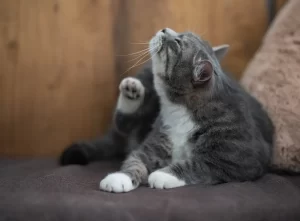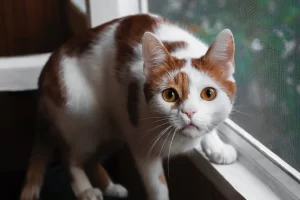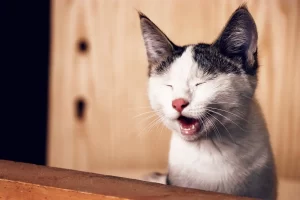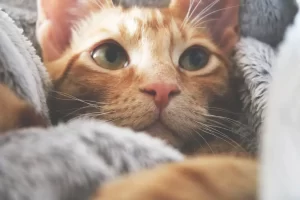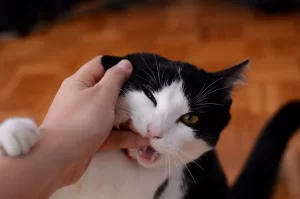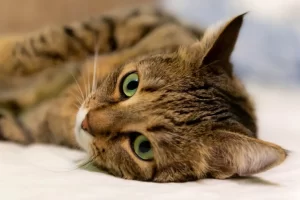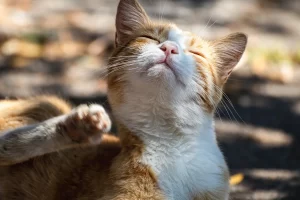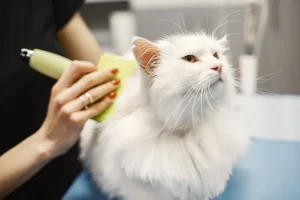Feline colds can be a common ailment that may cause discomfort for your cat and may lead to complications if left untreated. This article will provide an in-depth look at the symptoms of cat colds, their causes, and the best ways to treat them. We will cover the most common symptoms of cat colds, such as sneezing, runny nose, congestion, coughing, and watery eyes. Additionally, we will look at how the symptoms may vary based on the cause of the cold, and how to differentiate them from other respiratory issues such as asthma or allergies. We will also discuss how to prevent cat colds and when to seek veterinary care. By the end of this article, you will have a better understanding of cat colds and how to provide the best care for your cat during this time. If your cat is suffering from a cold, consider trying these proven home remedies at home.
Table of Contents
ToggleMain causes for cat cold
There are several main causes for cats getting colds, including:
- Exposure to other infected cats: Cats that come into contact with other cats that have a cold are at a higher risk of contracting the virus themselves. This can occur when cats live in close quarters, such as in shelters or multi-cat households.
- Viral infections: Certain viruses, such as feline herpesvirus (FHV-1) and feline calicivirus (FCV), can cause cold-like symptoms in cats. These viruses are highly contagious and can be spread through respiratory secretions, such as sneezing or coughing. If your cat or kitten is suffering from the calicivirus, you might be able to treat your feline at home.
- Bacterial infections: Cats can also develop colds due to bacterial infections, such as Bordetella bronchiseptica or Mycoplasma spp. These infections can cause inflammation in the respiratory tract and can lead to symptoms such as sneezing, coughing, and nasal discharge.
- Environmental factors: Cold temperatures, drafts, or damp conditions can also increase a cat’s risk of developing a cold. These conditions can weaken a cat’s immune system, making them more susceptible to infections.
- Stress: Cats that are under stress or have a weakened immune system may be more susceptible to contracting a cold. Stress can suppress the immune system, making it harder for the cat’s body to fight off infections.
- Age: Kittens and older cats may be more prone to getting colds due to their weaker immune system. Their immune system may not be as robust as adult cats and may not be able to fight off infections as effectively.
cat cold symptoms
The main symptoms of cats with colds are:
- Sneezing: Cats with colds may experience frequent sneezing, which can be caused by inflammation in the nasal passages (see how you can manage cat sneezing with home remedies).
- Runny nose: A cat with a cold may have a clear, watery, or colored discharge from its nose, which can be caused by inflammation or infection in the nasal passages.
- Congestion: Cats with colds may experience nasal congestion, which can make it difficult for them to breathe through their nose.
- Coughing: Cats with colds may experience coughing, which can be caused by inflammation or infection in the respiratory tract.
- Watery eyes: Cats with colds may have watery eyes, which can be caused by inflammation or infection in the eyes or nasal passages.
- Loss of appetite: Cats with colds may lose their appetite due to nasal congestion or discomfort caused by the cold.
- Fatigue: Cats with colds may be more tired than usual due to the energy used to fight the infection.
- Fever: Cats with colds may have a fever, which is a sign that the body is trying to fight off an infection.
- Mouth breathing: Cats with colds may start breathing through their mouths due to nasal congestion.
- Swelling of the eyes or face: Cats with colds may have swelling of their eyes or face, which can be caused by inflammation or infection in the nasal passages or sinuses.
- Loss of vocalization: Cats with colds may lose their voice or have hoarse vocalization.
- Eye or nasal discharge: Cats with colds may have discharge from their eyes or nose.
- Swollen lymph nodes: Cats with colds may have swollen lymph nodes, which can be caused by an infection.
- Sneezing blood: Cats with colds may sneeze blood, which can be caused by a severe infection.
- Difficulty breathing: Cats with colds may have difficulty breathing, which can be caused by inflammation or infection in the respiratory tract. It’s important to note that difficulty breathing is a serious symptom and should be evaluated by a veterinarian as soon as possible.
Variations in cold symptoms based on the cause
The symptoms of a cat cold may vary depending on the cause of the infection. For example, if the cold is caused by a viral infection, the symptoms may be more severe and last longer compared to a cold caused by a bacterial infection.
In general, viral infections tend to cause more inflammation in the respiratory tract and can lead to more severe symptoms such as high fever, severe nasal and eye discharge, and difficulty breathing. Whereas, a bacterial infection may cause less severe symptoms such as a mild fever, nasal discharge, and less severe congestion.
Additionally, some viral infections, such as feline herpesvirus (FHV-1) can cause chronic symptoms that recur throughout the cat’s life, whereas a bacterial infection may have a more acute presentation, resolving with treatment.
It’s important to note that, accurate diagnosis by a veterinarian is crucial to determine the cause and provide the appropriate treatment.
Read More: How often do you take a cat to the vet?
Differentiating cold symptoms from respiratory issues such as asthma or allergies
Differentiating cold symptoms from other respiratory issues such as asthma or allergies can be challenging, as some of the symptoms may overlap. However, there are certain characteristics that can help distinguish between a cold, asthma, and allergies in cats.
Colds are typically characterized by symptoms such as sneezing, runny nose, congestion, coughing, and watery eyes. Colds are usually caused by a viral or bacterial infection and can be spread through contact with other infected animals or through contact with contaminated surfaces.
Asthma, on the other hand, is characterized by symptoms such as wheezing, coughing, and difficulty breathing. Asthma is a chronic condition caused by inflammation in the airways and can be triggered by environmental factors such as cigarette smoke or dust. It can be treated at home using simple but effective home treatments and remedies.
Allergies, like asthma, can also cause symptoms such as sneezing, runny nose, and coughing. However, allergies are caused by an overreaction of the immune system to a specific allergen, such as pollen or mold.
It is important to note that a cat can have both a cold and asthma or allergies and it’s crucial to work with a veterinarian to make an accurate diagnosis and provide the appropriate treatment. In some cases, a veterinarian may recommend diagnostic tests such as radiographs, blood tests, and bronchoscopy to confirm the diagnosis and to identify the underlying cause of the symptoms.
Symptom duration and progression
The duration of the symptoms of a cat cold can vary depending on the cause of the infection, the severity of the symptoms, and the overall health of the cat.
In general, mild cases of a cold caused by a viral infection may resolve within 7-10 days with appropriate supportive care. However, more severe cases may last for several weeks or even months. Bacterial infections may resolve faster than viral infections with appropriate treatment.
Symptoms of a cold may also vary depending on the stage of the infection. In the early stages, symptoms such as sneezing, runny nose, and congestion may be more prominent. As the infection progresses, symptoms such as coughing, difficulty breathing, and lethargy may become more severe.
It’s important to note that if symptoms persist for more than a few days, or if they worsen instead of improving, it’s important to consult a veterinarian as soon as possible. This is especially true if the cat has difficulty breathing or if there are other symptoms such as fever, loss of appetite, or weight loss.
As a cat’s immune system fights the infection, the symptoms may resolve and the cat will recover. However, if left untreated, the infection can lead to more serious complications such as pneumonia, which can be fatal.
Impact of cold symptoms on appetite and energy (with proper diet suggestions)
Symptoms of a cat cold such as sneezing, runny nose, and congestion can affect a cat’s appetite and energy levels. The cat may have difficulty smelling or tasting food, which can make eating less appealing. Additionally, the cat may feel lethargic and less inclined to be active. If your cat shows these symptoms, it may benefit from these natural and home remedies which can boost its energy.
To encourage a cat to eat more during a cold, it may be helpful to try different types of food, such as wet food or strong-smelling food, as the cat may be more interested in these. It’s also important to make sure the cat has access to fresh water and to make sure the food is at a comfortable temperature for the cat.
In terms of diet, during a cold, it’s important to provide the cat with a balanced diet that provides all the necessary nutrients for the cat to recover. Some veterinarians may recommend a high-calorie diet or a diet that is high in protein and fat to help the cat maintain weight and build muscle. It’s always best to consult with a veterinarian to recommend the appropriate diet for the cat.
It’s also important to note that, if the cat has difficulty eating or is not eating at all, it’s important to consult a veterinarian as soon as possible as this can lead to serious complications such as malnutrition. If the cat is vomiting and not eating, it may have different causes and treatment methods.
Impact of cold symptoms on sleep and breathing
Symptoms of a cat cold such as sneezing, runny nose, and congestion can affect a cat’s sleep and breathing. The cat may have difficulty sleeping due to discomfort caused by the symptoms, or may have difficulty breathing due to congestion.
To help a cat sleep more comfortably during a cold, it may be helpful to create a comfortable sleeping area for the cat, such as providing a soft bed or blanket. It’s also important to make sure the sleeping area is in a quiet, draft-free location.
To help a cat breathe more comfortably during a cold, it’s important to clear the nasal passages by using a saline solution to flush out mucus, or use a humidifier to add moisture to the air. Some veterinarians may also recommend using a feline-specific vaporizer or a nebulizer to help clear the airways.
It’s important to note that if a cat is having difficulty breathing, it’s important to consult a veterinarian as soon as possible as this can be a serious complication of a cold. A veterinarian may recommend oxygen therapy or may prescribe medication to help relieve the symptoms and improve breathing.
It’s also important to note that, if the cat is showing signs of severe respiratory distress such as rapid breathing, open-mouthed breathing, or cyanosis (bluish discoloration of the gums or tongue), it’s important to seek emergency veterinary care immediately, as this can be a sign of a life-threatening condition.
Complications and secondary infections of cat colds
A cat cold, if left untreated, can lead to several possible complications or secondary infections. Some of the most common complications include:
- Secondary bacterial infections: A cold can weaken the cat’s immune system, making it more susceptible to secondary bacterial infections such as pneumonia or bronchitis.
- Otitis media: A cold can cause inflammation and congestion in the middle ear, which can lead to an ear infection known as otitis media.
- Sinusitis: A cold can cause inflammation and congestion in the sinuses, which can lead to a sinus infection. You can read more about sinus infections in cats as well as the most effective home remedies to treat sinus infections here.
- Asthma: A cat with a cold may develop asthma as a complication.
- Anemia: A cat with a cold may have a decreased appetite and may lose weight, which can lead to anemia.
- Malnutrition: A cat with a cold may have difficulty eating and may not be able to consume enough food to meet its nutritional needs, which can lead to malnutrition.
It’s important to note that if a cat is showing signs of any of these complications, it’s important to consult a veterinarian as soon as possible as they can be serious and may require treatment.
Symptoms based on age, breed, and overall health
Symptoms of a cat cold may vary depending on the age, breed, and overall health of the cat. Some of the factors that can affect the symptoms of a cat cold include:
- Age: Younger cats and older cats may be more susceptible to colds due to their weaker immune systems. Symptoms of colds may be more severe in older cats.
- Breed: Some cat breeds may be more prone to respiratory issues due to their facial structure, such as the Persian and Siamese.
- Overall health: Cats with underlying health conditions such as feline leukemia, feline immunodeficiency virus, or feline asthma may be more susceptible to colds and may have more severe symptoms.
It’s important to note that cats with underlying health conditions may require special care during a cold and may need to be treated with medications that are specifically tailored to their needs.
It’s also important to note that, if the cat is showing signs of severe respiratory distress, it’s important to seek emergency veterinary care immediately as this can be a sign of a life-threatening condition.
Monitoring cold progression and time to seek veterinary care
Monitoring the progression of symptoms and knowing when to seek veterinary care are important aspects of caring for a cat with a cold. Some of the things to look out for include:
- Duration of symptoms: Cold symptoms typically last for 7-14 days, however, if symptoms persist or worsen after 14 days, it’s important to consult a veterinarian as this may indicate a secondary infection or complication.
- The severity of symptoms: If a cat is showing signs of severe respiratory distress, such as labored breathing or open-mouth breathing, it’s important to seek emergency veterinary care immediately as this can be a sign of a life-threatening condition.
- Loss of appetite: If a cat is not eating or drinking, it’s important to consult a veterinarian as this can lead to dehydration and malnutrition.
- Lethargy or decreased activity: If a cat is not moving around or playing as usual, it’s important to consult a veterinarian as this can be a sign of an underlying health condition.
- Changes in behavior: If a cat is acting differently, such as becoming more aggressive or withdrawn, it’s important to consult a veterinarian as this can be a sign of an underlying health condition.
- Secondary symptoms: If a cat develops additional symptoms such as ear infections, eye infections, or skin infections, it’s important to consult a veterinarian as these can be signs of secondary infections.
- Fever: If a cat has a fever, it’s important to consult a veterinarian as this can be a sign of a secondary infection or complication.
It’s important to note that, if a cat has a cold, it’s important to keep it isolated from other cats to prevent the spread of infection.


